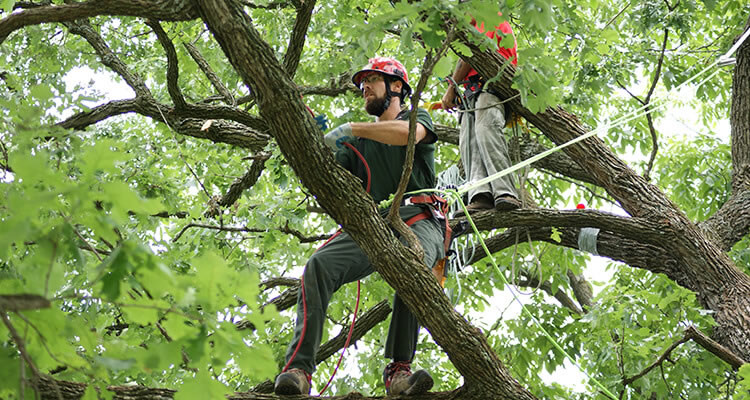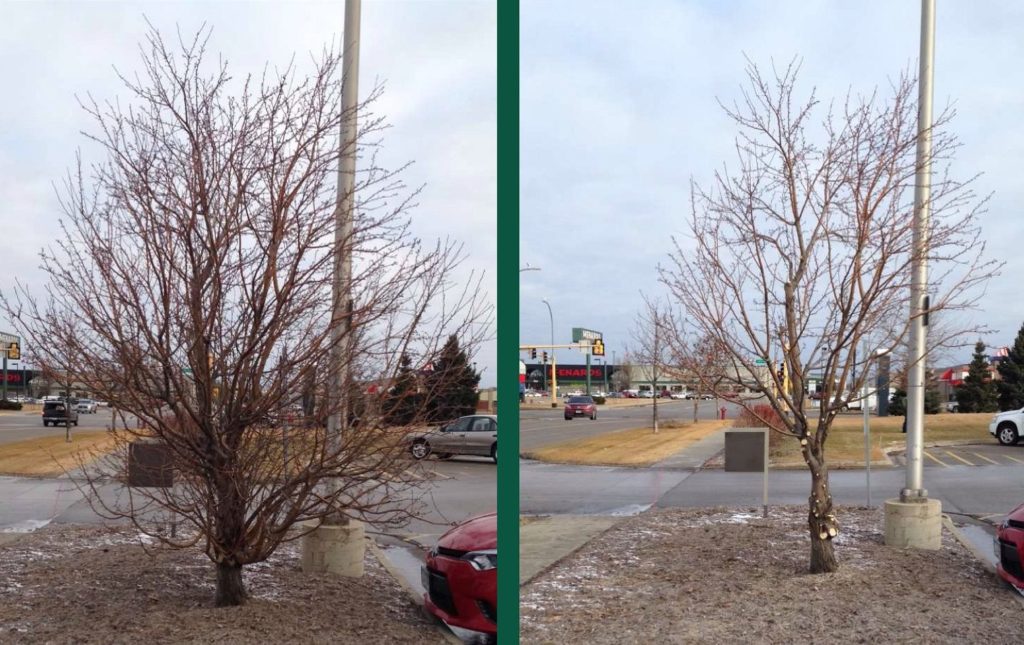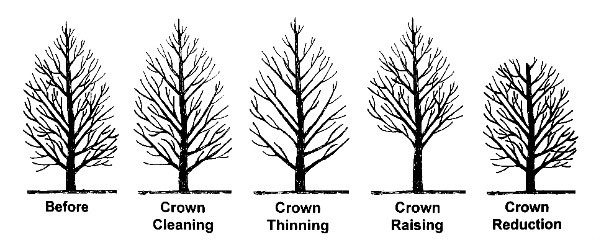Winter Tree Pruning for Commercial Landscapes

As a property manager or owner, what are some of the things that come to mind when you look outside at the landscape? Maybe you’re thinking that the grass needs to be cut or the shrubs need pruning. Maybe you’re reminded it’s time to pick up leaves or plant flowers. Sometimes trees get overlooked until we see damage from a storm or until they need to be removed because of poor health.
Trees are no different than other elements in the landscape. They need routine maintenance to stay healthy, vigorous, and to keep adding value to your property. Proper pruning helps prevent trees from having to remove them later due to irreversible damage. A well thought out tree pruning program that begins when trees are young is often less expensive than removing mature trees that are hazardous or in poor health.
Why Prune Trees in Winter?
Winter pruning, also called dormant pruning, and has several benefits. First, the landscape is especially quiet at this time of the year. During the warm growing season, insects and diseases are active in the landscape. Every cut creates an entry point for harmful pests to infest newly pruned plants. In winter, these landscape pests are inactive so the chances of an infestation are lower.
The lack of foliage in the winter also gives the best vantage point for seeing the branch structure. Opening canopies, removing crossed branches, and elevating limbs to a consistent level is easier without the foliage.
Unlike spring pruning, winter pruning does not force new growth since the trees are dormant during this season. So the trees don’t need as much water, sun, or nutrients to heal; they have plenty of time before warm weather hits.

Tree Pruning Techniques
Every pruning cut made in a tree canopy influences how that tree looks in the future so it is important to be purposeful in our pruning. Maintaining tree health and safety may require a variety of pruning techniques, depending on the condition of the tree and its location in the landscape.
- Crown Cleaning – the process of removing weak, dead, crossed, or diseased branches from the crown of a tree
- Thinning – selectively removing branches to allow better light penetration and improve the structure of the crown
- Elevation – remove lower branches to allow for clearance for pedestrians and vehicles or to frame desirable views
- Crown Reduction – reduce the size of the crown of a tree for clearance for utility lines or buildings and structures

Do I Need an Arborist to Prune Trees?
Answers can vary. Most pruning of young trees can happen from ground level. Elevating branches or removing broken branches is easily done without the use of specialized equipment or climbers. Licensed landscape professionals can perform this landscape maintenance service and specific type of pruning.
It is important to keep in mind that tree pruning is a highly-skilled trade and can be dangerous if done improperly. Poor pruning practices can cause life-long damage to trees. Extensive crown cleaning, pruning in the proximity of utility lines, and removal of hazardous aerial branches should all be done under the watchful eye of a professional. Additionally, pruning large trees that are in close proximity to structures or valuable property and removing mature trees should be performed by an arbor care professional.

Pruning during the dormant season is both beneficial and convenient. The long list of things to do in the landscape doesn’t exist in the winter. And winter pruning results in an explosion of new, vibrant growth in the spring. It literally jump-starts Spring!






